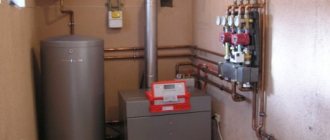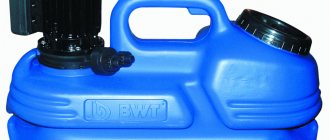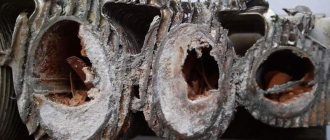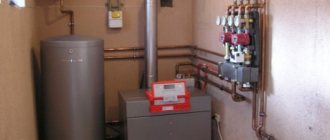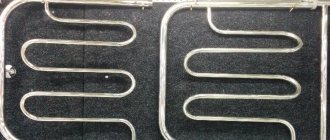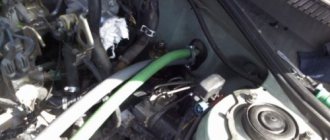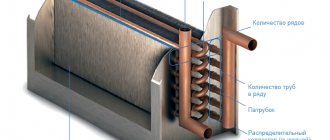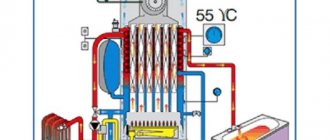How to quickly remove scale from a kettle
To clean the kettle with citric acid quickly and effectively, you should use the following algorithm:
- Determine how much substance is needed to remove scale. The thicker the plaque, the more acid is needed. Required proportion: 2 teaspoons of citric acid per 1 liter of water;
- Pour clean water into the kettle, filling 2/3 of its volume;
- Add the powder to the water and stir until it is completely dissolved;
- If the scale has recently formed and its layer is quite thin, then there is no need to boil it; just leave the acid solution in the kettle for 2-3 hours. Then you need to thoroughly wash the container, freeing it from any flakes and grains that have formed. If the plaque is more old, you need to boil an aqueous solution of lemon juice in a kettle for a quarter of an hour. After this, let it cool and wash the dishes with clean water. If necessary, the procedure can be repeated more than once.
Do-it-yourself heating flushing
For self-flushing radiators, mechanical cleaning technology is most applicable. In this case, you will not have to use any special equipment or specific chemicals. Before you wash the heat exchanger of a gas boiler with your own hands, you should prepare the necessary materials:
- rags or old thick clothes. With their help, it will be possible to protect the bathtub from damage during the process of flushing the radiators in it;
- fum tape or plumbing linen with a tube of sealing paste;
- a pipe that allows you to connect a hose to threaded connections.
The equipment you will need is the following:
- two hoses;
- a set of keys;
- brush;
- steel wire brush;
- buckets, basin and rags.
The actual cleaning of the heat exchanger and lines consists of several stages.
- A hose of the appropriate diameter is connected to the drain pipe of the heating system. The other end of the hose is discharged into the sewer.
- A second hose is connected to the highest point of the system. As a rule, such a point is either a branch to the expansion tank or a safety group. The tank or safety group is unscrewed and a pipe is screwed into its place, onto which a hose is put. The second end of the hose is connected to the water supply.
- When everything is ready, water is supplied to the system. This makes it possible to get rid of scale and contaminants deposited in the system lines.
- Start draining the coolant. To do this, remove the hose through which tap water was supplied. The connection point to the system is not blocked. Under the influence of gravity, water begins to drain through the drain pipe at the lowest point of the line.
Radiators are removed from the dehydrated system
Care must be taken when doing this. It is likely that the threaded connections on them are coked and you will have to make some efforts, trying not to damage the threads. The removed radiators are transferred to a bathtub, previously covered with rags or thick fabric
Here they are washed with running water, treated with a brush and a steel wire brush. After flushing the radiator, it is carefully inspected again for any remaining contaminants. The radiators are installed in place.
The lines are filled with fresh water through the drain pipe. At the same time, monitor the formation of air pockets in the pipes and radiators. You can get rid of air bubbles by slightly opening the Mayevsky valves on the radiators. As soon as the air stops hissing and water begins to ooze from the tap, close it. As the lines fill, it is advisable to repeat this procedure several times. After the actual washing of the gas boiler heat exchanger is completed with your own hands, the heating system is put into operation. As the coolant begins to circulate, air pockets in the radiators may re-form. To eliminate them, the Mayevsky cranes are manipulated again. Some of the air will be removed independently through the air vent. As the pipelines and radiators are freed from air, the coolant pressure will drop. To level it, it is necessary to additionally pump water from the water supply. In addition, you should check the pressure in the expansion tank.
For an overview of connection diagrams for heating radiators in a private house, see here.
Popular means
Any method of removing contaminants will require a cleaning reagent. Liquids for flushing heat exchangers of gas boilers must be selected carefully, because... some types can corrode the material and cause equipment failure.
The following acids will help get rid of scale and deposits
- salt;
- sulfamic;
- orthophosphoric;
- lemon;
- Detex flushing fluid.
Hydrochloric acid, diluted in a concentration of 2−5%, is used to clean stainless steel and copper devices. Inhibitors as additives will protect the material from destruction. The substance is extremely aggressive, so it is better to entrust work with hydrochloric acid to professionals if the principle of its action is not fully understood.
Metal oxides are easily removed using a sulfamine solution. It does not harm the structure and is safe for home use. The composition contains an acid concentrate of 2−3% and anti-corrosion additives.
Heat exchangers of all types of gas boilers can be cleaned with phosphoric acid. The product fights dirt well, forms a protective coating on the surface and does not corrode the material. A solution with 13% reagent is sufficient for effective washing.
Citric acid qualitatively eliminates oxidation and scale when heated to +60°C, without affecting the metal of the structure. It is suitable for processing units made of brass, copper and stainless steel. The concentration may vary depending on the degree of contamination and range from 0.5−1.5%.
Steel, cast iron and copper devices are cleaned using a special Detex product that removes salts, scale, deposits and oxides. Active components and inhibitor additives protect the surface and extend the life of the device. The composition is diluted with water in a ratio of 1:6 - 1:10. As the reagent moves through the heat exchanger, gas is released. If its output stops, then the effect of the cleaning liquid has ended. To achieve the maximum flushing effect, you can increase the concentration of the Detex reagent, achieving the resumption of gas formation. After cleaning, the system is washed with a neutralizing solution and rinsed with water.
Tips and tricks
As you can see, the amount of citric acid in the solution can be considered conditional. At the same time, you should not strive to significantly exceed the concentration, since citric acid in large quantities can also be aggressive towards individual parts of the cooling system.
To obtain the result, it is optimal not to increase the amount of acid, but to repeat the washing procedure several times. Some owners even practice a more radical method, when they drive the car for a short time with a cleaner filled in instead of antifreeze, then the system is washed, then distilled water is poured in and the car is operated as usual.
The next day, the cleaner is poured in again, and the washing under load is repeated. Only after the flushing and distilled water that is drained are clean, fresh antifreeze is poured into the system.
Finally, we note that preventive flushing of the engine cooling system with citric acid or other means allows you to extend the service life of individual parts of this system and reduce the load. It is also possible to increase the life of antifreeze or antifreeze.
Remember, proper operation of the engine cooling system allows you to maintain optimal temperature balance in any conditions, which has a positive effect on the overall service life of the internal combustion engine.
A little theory
The process of washing products made of aluminum and its alloys is not so simple. Products usually used for cleaning copper radiators are dangerous for aluminum. This is where the savings come from for automakers who are replacing copper with aluminum everywhere. Therefore, you should choose wisely when choosing flushing agents and liquids.
The fact is that aluminum, as an active metal, reacts not only with all alkalis, many acids, but even with water. Thanks to the oxide film on the metal surface, it exhibits corrosion resistance in a neutral environment (pH=7). Detergents with an acidic nature (pH<4.8) at a certain concentration can destroy the surface of aluminum. Washing solutions with an alkaline reaction (pH>9.5), for example, potash, soda, caustic soda, are aggressive towards aluminum.
Sometimes they say that copper radiators should be washed with alkaline solutions, but aluminum radiators should be washed with acidic solutions, since aluminum, they say, is not afraid of acids. This is confirmed by the fact that nitric and sulfuric acids are transported in aluminum tanks. And indeed it is. But the fact is that the activity of acids towards aluminum depends on their concentration. So, 98% sulfuric acid has little activity towards this material, just like nitric acid. Moreover, they even contribute to the formation of a protective oxide film on its surface. But in dilute acid solutions, silver metal is not resistant to corrosion.
Mechanical cleaning of plate heat exchangers
You can clean the boiler from soot without removing the heat exchanger. To do this, just remove the cover, arm yourself with a stiff nylon brush and close the gas injectors so that dirt does not get in there. The whole process is clearly shown in the video:
https://youtube.com/watch?v=ccEAX_yoExc
If soot has stuck to the surface and is not removed by mechanical treatment with a brush, then the heat exchanger is removed and soaked in special cleaning solutions for several hours. Such products are available for sale in a wide range, examples include Fauch and MAZBIT+ products. But you can also use household chemicals - gels for cleaning grills and ovens.
Before disassembling the boiler, you need to disconnect it from gas and the igniter from electricity. In addition, it is necessary to drain the water from both circuits and the expansion tank. The secondary heat exchanger is removed first; it is located immediately behind the boiler lid. The primary (main) one is more problematic to remove, since you will have to disassemble the combustion chamber.
Methods for washing heat exchangers
The method for washing the heating element directly depends on its design and the quality of the water used. The coolant can be prepared and contain chemical additives or be ordinary running water.
Heat exchangers are divided into three types: plate (primary and secondary), fire-tube (for floor-standing boilers) and bithermal (mounted or floor-mounted installations). Depending on the means used, methods for flushing the heat exchanger of a gas boiler are divided into several types. Each user can choose how to clean a gas boiler.
Chemical cleaning
Chemical flushing of the boiler does not involve removing the heat exchanger, but you will need special technology equipment - a booster. Anyone can make this device with their own hands. Before using flushing equipment, you will need to drain the coolant from the heat exchanger and reduce the pressure in the system.
Booster for flushing
Booster installation procedure:
- attach two metal plates (up to 2.5 mm) to the coil connections and drill holes in the plates opposite them;
- purchase four American cranes;
- mount the taps into the holes on the plates and connect them;
- An adapter for connecting a hose is installed at the bottom of the container. It is important to ensure the tightness of this unit.
In general, all connections must be sealed to avoid contact with a dangerous reagent, and the solution must be prepared using protective gloves and goggles. To start the process, you will need a small flushing pump connected to a container into which about 6 liters of water at a temperature of 50°C is poured. The hoses from the tank are connected to the heat exchanger and the pump is turned on.
After circulation begins, it is important to carry out a visual inspection of the system for leaks. If there are no leaks, then cleaning the boiler continues. A washing solution is added to the liquid and the process lasts at least 40 minutes.
Considering that flushing is also necessary for the secondary heat exchanger, the procedure time should be increased to 1 hour 20 minutes. After washing, the hoses from the booster are disconnected and connected to the water supply to clean waste with water when descaling the boiler.
Manual
This type of flushing involves removing the heat exchanger from the boiler. From the outside it is cleaned with a wire brush to clean the boiler, and then placed in a washing solution for several hours.
The disadvantage of manual washing is the lack of circulation of the flushing liquid inside the heat exchanger, as well as direct contact of the aggressive substance with the rubber seals. Therefore, when starting up the equipment after flushing, you should make sure that the seals are tight under pressure conditions.
Hydrodynamic flushing
This method does not require disassembling the hot water boiler. The principle of hydrodynamic washing consists of connecting to a heat exchanger an installation that supplies an aqueous solution of high pressure, which may contain abrasive substances.
The solution moves at increased speed, which contributes to high-quality cleaning of the internal surface from deposits.
This type of washing should be carried out by specialists, since incorrectly selected pressure parameters can damage the heating element.
Electric discharge
Among the most modern cleaning methods, electric discharge stands out. The principle of cleaning is to supply electrical discharges to the flushing liquid, due to which high-speed hydraulic flows and intense elastic vibrations with the effect of cavitation appear in it.
An electric arc, in contact with salt deposits, destroys them, and flows of liquid wash the gas boiler from crushed scale. This method is capable of dealing with deposits of any thickness and strength.
When cleaning the heat exchanger of a double-circuit boiler with your own hands, you should take into account the design features of the boiler. If it is equipped with a bithermal coil that works both for heating needs and for supplying hot water, then cleaning is done using a flushing booster.
For double-circuit boilers, it is important to carry out internal cleaning of the secondary heat exchanger. Moreover, it needs to be cleaned more often, since it uses untreated water, and therefore salt deposits accumulate on the walls of the secondary heat exchanger very intensively.
This also applies to bithermal heating elements. The cleaning procedure for boilers with two circuits is carried out in two approaches: external mechanical cleaning of soot and soot with a brush to clean the boiler and internal flushing of the boiler from scale. For industrial equipment, these methods may not be effective enough, so in production and energy facilities the gas pulse cleaning method is used.
The operating principle of this method is the action of an acoustic wave on deposits in the heating surfaces of the boiler. Such a wave is formed by achieving explosive combustion of a small volume of a gas mixture, which occurs in a pulse chamber located outside the flue.
Due to the combustion products emanating from this chamber, a wave dynamic effect occurs on all internal surfaces. To ensure the process, natural and bottled gases, as well as air from the compressor, are used.
How to clean the fire tube heat exchanger of a single-circuit boiler
Cleaning floor-standing boilers with a fire tube heat exchanger differs from the same procedure for mounted equipment. Here, to carry out the procedure, the heat exchanger is not removed, but only access to it is provided.
To complete the work you will need the following tools:
- open-end wrenches;
- metal brush;
- hand brush for metal;
- screwdriver;
- natural bristle brush or nylon brush.
The first mandatory action is to turn off the gas supply valve. Next, you need to complete three stages of work - providing access to the heat exchanger, cleaning parts, and assembling the boiler. The disassembly/assembly steps depend on the specific model. How to clean boilers of the MAYAK-12 KS model can be seen in detail in the video.
How to flush the heat exchanger of a gas boiler
A heat exchanger is a device that transfers heat from one coolant (water) to another (air). It consists of heat transfer elements and cavities for the passage of water. If the water is hard, then over time scale will form in the heat exchanger, which must be removed periodically. Therefore, if scale, rust or other contaminants appear on the surface of the heat exchanger, you need to know how to flush the heat exchanger of a gas boiler. And for reliable, safe and uninterrupted operation, this should be done regularly. The frequency of flushing depends on the quality of the water (especially its hardness) and the operating parameters of the boiler (temperature, load). With any washing method, deposits are first removed using solutions of various acids or special reagents, then washed with water.
The first way to flush the heat exchanger of a gas boiler (with removing the heat exchanger)
- screwdriver;
- enamel basin;
- lemon acid.
Procedure:
- Turn off the gas supply valves to the heating system.
- Drain the water.
- Remove the heat exchanger by carefully unscrewing the screws and water pipes. Also remove the overheating sensor from the heat exchanger housing.
- Prepare a solution of citric acid (20 g per 1 liter of water).
- Place the heat exchanger in the basin. Pour the prepared solution into it. The heat exchanger must be completely immersed in the solution.
- Heat the solution, wait 5-10 minutes.
- Drain the solution.
- Rinse the heat exchanger thoroughly with running water.
- Put the heat exchanger in place, tightening all the screws and tubes, securing the overheating sensor.
The second way to flush the heat exchanger of a gas boiler (using special flushing units)
- installation for chemical washing (consists of a solution tank, pump and connecting hoses);
- special reagents or citric acid.
Procedure:
- Turn off the boiler.
- Drain the water.
- Remove the circulation pump to avoid possible damage.
- Install a washing unit in its place and connect it using special hoses.
- Prepare a solution in the tank of the washing unit. Recommended concentrations for each reagent are indicated in the instructions for use.
- Turn on the pump.
- When circulating the solution, it is necessary to monitor the pressure in the installation, not allowing it to be exceeded.
- Drain the solution.
- Rinse with water.
- Dismantle the flushing unit and put the circulation pump in place.
Knowing how to flush the heat exchanger of a gas boiler, you will extend the life of not only the device itself, but also the heating system as a whole.
Precautionary measures
Before using citric acid, take safety precautions:
- Do not use too much of the product - high concentrations of acid are dangerous for plastic and rubber parts.
- Cleaning should only be done with an empty drum. Under no circumstances combine the descaling procedure with washing the laundry, otherwise the items will be damaged.
- Do not use citric acid too often, as this may damage the washing machine parts.
The heating element of the washing machine before and after cleaning with citric acid
. Following the simple measures described in this article will help extend the life of the washing machine. But you shouldn’t rely only on citric acid; don’t forget about other rules for careful operation of the unit. If your laundry is heavily soiled, rinse it before washing in the machine to prevent dirt particles from settling on the mechanisms. We do not recommend leaving wet laundry in the tub for a long time; hang things up immediately after washing. Keep the tank clean, don’t forget to wash the filter, try to wash as little as possible at temperatures above +60 ℃. Be careful, and your washing machine will thank you with long and trouble-free operation!
What to do if scale remains
For owners who are not the most careful, who do not like to monitor the condition of their kitchen utensils, this is quite possible - all the scale will not be removed the first time, because the coating is too dense and thick. What to do in this case? You can repeat the procedure; the second time it will probably be more successful.
You can also try to enhance the effectiveness of citric acid with baking soda. In this case, pour one spoonful of acid and soda into the kettle, and then proceed as indicated above. After the water has cooled, it is drained and, if necessary, the walls of the kettle are mechanically cleaned of scale residues using a hard sponge.
Adblock detector
How to determine when it's time to descale
You can try to determine the presence of scale on the heating element yourself. To do this, you don’t need to disassemble the car, you just need to arm yourself with a bright flashlight. Direct the light beam to the bottom of the drum - it is under it that the heating element is usually located. Carefully rotate the drum and look closely at its holes. With a little patience, you will be able to see the outline of the heating element. Some models of washing machines are equipped with special doors, by opening which you can inspect the heating element and assess its condition. If you notice the slightest traces of scale formation, arm yourself with our advice and hurry to help your washing machine.
The service technician will help you find out if it’s time to descale your washing machine.
How to clean interior surfaces
Washing the inner surface of a plate, fire tube or bithermal heat exchanger is possible only with the help of special equipment.
- High pressure pump – hydrodynamic flushing. Used to remove small deposits. Advantages are the speed of the procedure and the ability to clean without removing the heat exchanger.
- Booster (acid-resistant pump) – acid (chemical) flushing. Removes even old scale. Advantages – removes scale that cannot be removed by other methods. Disadvantages - if the reagents (acids and neutralizers) are selected incorrectly, it reduces the service life of the heat exchanger.
- Complex "Streamer" for electric discharge cleaning. Used to remove scale of any strength. Advantages - the metal of the heat exchanger is not destroyed, a high degree of cleaning is ensured. Disadvantages: noise and duration of the procedure.
Of all the methods listed above, only chemical cleaning is possible at home, since the factory booster can be replaced with a low-pressure pump. The rest of the equipment is both expensive and voluminous, so such boiler washing can only be carried out by service centers.
Definition
A heat exchanger is a mechanism that directs heat from one coolant (water) to a second (air).
If it is exposed to hard water for a long time, then scale, rust and other contaminants form in it. They need to be eliminated promptly.
The regularity of cleaning is determined by the quality of the water and the parameters of the boiler itself, as well as the degree of load on it.
Whatever washing method is chosen, first of all, deposits are removed using mixtures of different acids or special reagents. After payday loans gallatin tn followed by rinsing with water.
If you do not carry out these operations, then:
- The heat exchanger will overheat.
- The efficiency of the boiler will decrease.
- The boiler may break down. In an advanced case, an explosion is not ruled out.
Folk remedies for cleaning irons
In addition to acid, mineral water helps a lot. How to descale a tank:
- Pour in water to the maximum level.
- Turn on the iron to maximum temperature and let it warm up.
- After automatic shutdown, the device is placed over the bathtub and the steam button is pressed.
- Water with pieces of sediment and dirt will drain from the reservoir and openings.
If necessary, repeat the procedure. Finally, wash the tank with clean water and wipe dry.
Antiscale is a cheap and folk remedy. It is used in many areas when cleaning various materials. The drug is sold in hardware stores. The powder is diluted in water according to the instructions and poured into the compartment. Turn on the iron and press the steam button several times.
Important! Regular lemon removes scale and stuck fabrics from the iron perfectly. Rub the sole with a slice and clean the tank with juice.
Gas boiler cleaning options
There are several basic methods for cleaning gas boiler heat exchangers:
…
- manual;
- chemical;
- hydrodynamic.
Which method to use depends on the degree of blockage. Let's take a closer look at each of the listed methods.
Manual cleaning
Not all users of gas boilers know how to clean the heat exchanger of a gas boiler themselves. Manual cleaning is easiest to do yourself. There are two ways to perform this method:
- mechanical - using a brush and brush;
- washing with active solutions is a more effective option, especially relevant for boilers with two circuits.
For severe contamination, two methods of descaling are used - first washing, and then mechanical cleaning. This process is carried out in the following steps:
- turn off the gas and disconnect the unit from electricity;
- open the lid of the gas boiler;
- dismantle the heat exchanger;
- place it in an active substance, for example, a solution of hydrochloric acid;
- remove the heat exchanger from the solution and clean the dirt with a brush or brush;
- rinse the element with water inside and out;
- dry and install the circuit back.
Dry cleaning
Dry cleaning is characterized by the use of a booster or its analogues, as well as aggressive chemicals. An important condition for chemical cleaning is maintaining a safe concentration of the substance so that it does not corrode the surface of the heat exchanger.
Chemical cleaning is carried out using a booster, but many craftsmen create its cheap analogue with their own hands. To do this, take a 10-liter container and attach two hoses and a pump to it.
Find out here how to change a gas boiler - rules and responsibilities
Maintenance and repair of gas boilers
Replacing the heat exchanger in a gas boiler with your own hands
If the scale layer is too large, you can use substances based on sulfuric or hydrochloric acid for cleaning. The simplest cleaning solution is made from citric acid: 200 grams of powder is diluted with 5 liters of water.
The chemical cleaning process is quite simple:
- the chemical solution is diluted in a container and poured into the booster;
- two hoses are connected to two boiler pipes - inlet and return;
- turn on the device and drive the liquid through the heat exchanger several times.
Factory boosters have a heating function, which allows you to flush the circuits with greater efficiency.
After the procedure, it is necessary to drain the reagent and rinse the system again with a neutralizing agent or clean water.
Of course, dry cleaning is more effective than manual cleaning, but the active substances contained in the solutions can lead to corrosion. Therefore, this method cannot be used often.
Heat exchanger cleaning solutions
Some owners of gas boilers on the forums are interested in how to clean a gas boiler from scale at home. Typically, the following products are used for dry cleaning:
- Cleaning gel - it is considered the mildest product. Afterwards, it is enough to rinse the heat exchanger with running water. Despite its gentle effect, the gel copes well with scale and lime deposits.
- Adipic acid - in order to flush the heat exchanger of a gas boiler with acid, it is important to dilute it with water in the correct proportion, otherwise the substance will damage the metal surface. Adipic acid softens all deposits inside the heat exchanger well. After flushing the system with this product, neutralizing liquid should be driven through it.
- Sulfamic acid – helps cope well with complex stains. The substance is diluted with water and filled into a booster. After completing the process, it is necessary to rinse the heat exchanger with neutralizing liquid.
Note! When performing chemical cleaning, you should wear rubber gloves on your hands, and protect your body with special clothing, through which the acid solution cannot get on the skin.
Hydrodynamic cleaning
This method of cleaning the heat exchanger is carried out only by specialists. There is no need to disassemble the boiler and remove the heat exchanger to do this. The principle of hydrodynamic cleaning is as follows: liquid is pumped into the system and circulated under pressure several times. For greater efficiency, cleaning abrasive substances are added to the water. It turns out that due to the rapid movement of water, scale disappears and impurities are washed away.
However, with this method it is important to correctly calculate the pressure force - if it is too great, a pipe breakthrough may occur. Therefore, hydrodynamic cleaning cannot be performed independently.
Is it necessary to conclude a contract for gas boiler maintenance?
How to properly ground a gas boiler? —
https://oteple.com/kak-pravilno-vypolnit-zazemlenie-gazovogo-kotla/
How to descale a kettle with citric acid
There are several options for cleaning by boiling and without it, with lemon.
Boiling
Remove scale from the kettle using citric acid by boiling. This method is suitable for large quantities of sludge that have already been tightly compacted. The process is divided into the following stages:
- Before cleaning the kettle from scale with citric acid, you must first wipe the walls and heating element from soft deposits. You can do this with a hard rag, but under no circumstances use hard, and especially metal, sponges. After this, rinse thoroughly with cold water.
- Depending on the amount of plaque, use 20-40 g. funds for one boiling. In regular store packages this is 1-2 pieces. Prepare them.
- Fill the electric kettle with clean water to 2/3 of its capacity, open the prepared packages and pour into the liquid.
- Put the device to boil. If it has an automatic switch, bring it to a boil again a few minutes after turning it off. If there is no machine, boil the water for 2-3 minutes.
- Leave the kettle for several hours. After this, pour out the water and carefully remove the softened sediment (without the help of sharp objects). If cleansing is not complete, repeat the procedure.
- Rinse thoroughly to remove any sediment, pour in clean water, boil it and pour it out. Next, the device is ready for use.
No boiling
If the electric kettle is cleaned at least once a month (twice in case of hard water), you can use milder measures and descale the kettle with citric acid without boiling. For this it is enough:
- Dissolve a packet of citric acid in warm water.
- Fill the container with the solution and leave for 4-5 hours, preferably overnight.
- Rinse the device to remove any sediment.
- Fill with clean water and boil. The electric kettle is sediment-free and ready for use.
Regular lemon
There are small children in the house, and you have doubts about how to descale a kettle with citric acid, while still being sure of the baby’s safety? There is a solution that is a little more expensive, but ideal in terms of safety for the body, even for infants. To do this, we descale the kettle with homemade citric acid. Of course, there is no need to make powder. It is enough to have an ordinary lemon in stock:
- It is cut into thin circles along with the skin.
- The electric kettle is filled 2/3 with water, the cut rings are lowered into it and the whole thing is set to boil.
- The softened sediment along with the remaining lemon is removed from the container, and the device is thoroughly rinsed.
Lemon descaler in a kettle is a great idea, although it costs a little more on your pocket. The method is not only harmless and quick (no final boiling is needed), but also has another interesting property - the boiling container gets a pleasant lemon smell for a while. As for the amount of product, it should be varied depending on the contamination.
For regular cleaning, half a lemon is enough, but to descale an electric kettle with naturally occurring citric acid in advanced cases, you will have to chop 2-3 pieces and fill half the container with mugs.
It is better to descale a kettle with citric acid frequently. This will significantly extend the life of the electrical appliance, preserving not only its performance, but also your health. No sediment – no sand and kidney stones, no infection and no stress on the liver.
Knowing how to clean scale with citric acid in a kettle quickly and carefully, you can always keep both the electrical appliance and its owner healthy.
How to properly flush the heat exchanger of a double-circuit boiler?
Mikhail, Ekaterinburg asks a question:
Good afternoon 3 years ago we installed a double-circuit boiler. This is a very convenient device, since the apartment is now warm and there is always hot water. At the time of purchase, I was told in the store that it is necessary to clean the boiler once a year if the tap water is very hard. To carry out cleaning, you need to call specialists, but this costs a lot of money. In fact, that’s why we didn’t clean the installation for so long. Tell me, at what intervals should cleaning be done? And how to rinse the heat exchanger of a double-circuit boiler from lime deposits? Thank you so much in advance for your help!
Hello! You should not worry too much, since modern models of double-circuit boilers do not deteriorate at all if you clean them once every 3 years (even if the water is very hard). The main thing #8211 is not to start the process until 5 years of use. The fact that the store advised you to clean it once a year is only partially correct. But this makes no sense, since you will only waste money again. The ideal option #8211 is to carry out such work once every 3 years, subject to constant use of the boiler.
It is necessary to understand how to rinse the heat exchanger under a double-circuit boiler correctly. There are several cleaning methods. The most effective is considered to be standard washing using a special liquid that is capable of peeling off limescale deposits from the internal walls of a given installation.
Before you get to work, you need to turn everything off. To begin, turn on the tap at the bottom of the boiler, which ensures the flow of cold water into it. Next you need to reduce the pressure to zero. If there is no such relief valve, skip this step. Now be sure to disconnect the boiler from gas and electricity. This must be done to ensure your safety. If possible, immediately drain the water from the boiler.
Now you need to remove the casing from the boiler. To do this, you need to unscrew the four nuts at the bottom. Please note that water may flow from below. Therefore, it is recommended to do this over a large basin or even take the boiler outside, first removing it from the hinges on the wall. Unscrew the heat exchanger slowly to avoid damaging the parts.
Next, the heat exchangers are washed. This can be done with ordinary running water. You will see for yourself when the water becomes cleaner after washing. Absolute clarity will indicate that the majority of the flushing was successful. Now you can rinse everything with boiled cold water.
Now it's time to use the cleaner. A special liquid for flushing circuits is purchased in advance, which eliminates deposits on parts. This liquid is poured into two basins, then the contours are placed in these basins so that their entire surface is covered with the product. Leave it all for 15-20 minutes. But before that, read the instructions carefully. After all, some products may require more or, conversely, less time for settling.
After this, the circuits are pulled out of the containers. Now, instead of liquid, you need to pour boiling water with washing powder diluted in it into the basins. The amount of powder should be sufficient. Place the heat exchangers in this solution for 3-5 minutes.
Now all you have to do is rinse the contours several times so that there are no traces of concentrate and powder left.
Flushing the double-circuit boiler can be considered complete. All you have to do now is install the heat exchanger in place. To do this, you first need to install new rubber gaskets, even if the old ones are still quite suitable.
Then everything needs to be returned to its place, trying to tighten the nuts as tightly as possible. A good way to do this is to use a wrench. Once everything is assembled, hang the cauldron back on the hooks. Then you can connect the installation to gas, electricity and water. You are convinced that figuring everything out is not so difficult. And if difficulties arise during assembly or disassembly of the circuits, you need to refer to the instructions. There is a diagram where everything is shown in detail, so it is almost impossible to get confused.
Step-by-step instructions for cleaning a kettle with citric acid
At first glance, plaque may seem harmless, but in fact its presence has a negative effect on the human body and the kettle itself. For this reason, it must be eliminated in a timely manner. Doing this yourself at home will not be difficult. To clean the kettle from plaque with citric acid, use the following instructions:
- Depending on the degree of contamination of the kettle flask, take two or three packs of citric acid - approximately 30 g.
- Fill the container with water - enough so that the liquid completely covers the scale area.
- Pour the contents of the bags into the water, then put the kettle to boil. It should be well saturated with citric acid granules within 5 minutes. If the allotted time was not enough, you can let it stand for some more time.
- When the plaque completely peels off from the walls of the kettle, the water needs to be drained, then rinse the container well several times. Before boiling water for further use, we recommend draining the first portion, then using a new one for its intended purpose.
- In cases where scale has just begun to appear, you do not need to resort to boiling. It is enough to let the kettle filled with the solution stand for several hours. After the time has passed, you need to rinse it well, fill it with water, boil it, drain the first liquid, and use the second.
If there is no citric acid in the house, and going to the store is not the best solution, you can use lemon. To do this, you need to put several slices in a kettle, add water and boil several times. This method works well in cleaning ceramics, stainless steel, glass, plastic and enamel.
Liquid for flushing heat exchangers of gas boilers
Hydrochloric acid:
An aqueous solution of hydrochloric acid with a concentration of 2-5% is successfully used to clean heat exchangers made of copper or stainless steel. Special additives – inhibitors – help protect the metal without interfering with the dissolution of oxides and carbonates. Washing with hydrochloric acid is the job of professionals who are aware of their actions when working with this aggressive reagent. It is highly not recommended to clean the heat exchanger of a gas boiler with this product on your own, at home, without a clear understanding of the processes taking place.
Note! In addition, there is information that the use of hydrochloric acid can lead to brittleness of the metal.
Detex Liquid:
The “Detex” cleaning agent is used to remove scale, oxides, salts and various biological deposits from the walls of cast iron, steel and copper heat exchangers. Due to the content of surfactants and corrosion inhibitor additives, it protects the metal, thereby increasing the service life of heating equipment. Depending on the degree of contamination, con is diluted with water in a ratio of 1/6 - 1/10 and poured into a washing machine.
The process of circulating the liquid for flushing through the heat exchanger of a gas boiler is accompanied by gas evolution, the stop of which indicates the end of the action of the reagent. If the required quality of washing is not achieved, you should increase the pressure until the gas formation process resumes and continue the cleaning procedure. At the final stage, it is necessary to rinse the heat exchanger with a neutralizing liquid, and then with water.
Orthophosphoric acid:
Flushing with orthophosphoric acid is effective for heat exchangers of gas boilers of all types. This cleaning product not only perfectly removes scale and dirt, but also does not cause any harm to the metal and even creates a protective film. To obtain an effective reagent, it is necessary to dilute orthophosphoric acid in water to obtain a 13% solution.
Causes of clogged heating system
The main source of contaminants that disrupt the operation of thermal circuits is the coolant. This is most often tap water. When filling the system, small debris from the water supply can easily get in with it. As the water circulates, this debris is transferred to the radiators, where it accumulates.
Another source of contamination is scale. It is formed in the boiler, where water comes into contact with the hot walls of the heat exchanger. Gradually, the inside of the boiler becomes covered with a layer of scale, which has relatively low thermal conductivity. A heat exchanger coated with scale transfers energy to the coolant much worse. With a thickness of salt deposits of several millimeters, the efficiency of the boiler can decrease by almost a third. During the process of cyclic heating and cooling, the scale crust is destroyed. The exfoliated particles enter the pipeline and are deposited both on the inner walls of the pipes and in the radiators. Accordingly, their heat transfer decreases and there is reason to think about how to flush the heating system in a private house with your own hands.
In addition, due to the oxygen contained in the water, rust gradually forms in the metal elements of the system. Like scale, rust increases the hydraulic resistance of pipes and is an additional source of contamination.
How to clean your heating system
At the heart of any hydronic heating system are pipes and water. And over time, the pipes rust, the rust scales fall off, and the water pressure carries them through the system until they are stopped by some bend in the pipes or a joint. And even if the pipes are plastic and not subject to corrosion, the water itself, when heated, forms a limescale deposit on the surface of the pipes and sediment. And if the heating often boils and you have to constantly add water, then this further accelerates the process of sediment formation. Another source of pipe clogging is microorganisms and their metabolic products, which can develop in the heating system during the non-heating period. As a result of their vital activity, black sediment may appear at the bottom of the system, which is also a source of blockage.
But whatever the source of clogging of the heating system, the result is always the same -
after some time the pipes become clogged,
their capacity is reduced and then even the water pump is not able to pump water through the heating system. Not to mention the thermosyphon system, which is operated without a water pump. And then not only do the batteries remain cold or almost cold, but the boiler also begins to overheat, which can damage it.
Some owners practice annual prevention of blockages in the heating system by changing the water. Those. drain old, dirty, rusty water and fill in fresh water instead. There is logic in this - some of the scale and rust leaves the heating system with old water. However, there is another side to the coin. The fact is that for rust to form, iron and oxygen are needed. When these two components interact, rust is formed. And if there is always iron in the pipes - these are the pipes themselves, then oxygen is supplied along with the water. In water that has been poured into the heating system for a long time, very little oxygen remains and the process of rust formation slows down greatly. But if old water is drained from the system and fresh water is added, the system will receive an additional influx of oxygen and the process of rust formation will begin with full force. So it turns out that by replacing the water, we will remove some old rust from the system, but will speed up the process of formation of new one.
So how to deal with a clogged heating system? If desired, you can a priori get rid of blockages. To do this, it is necessary to fill the heating system not with tap water, but with a special antifreeze for heating systems. It acts in exactly the same way as a car - it provides good thermal conductivity, protects metal parts from oxidation and rust, and prevents the occurrence of limescale and other types of sediment. This option is the most expensive, but it allows you to forget about maintenance and cleaning of the heating system.
Cleaning
The easiest way to clean a heating system is chemical cleaning (chemical flushing). To do this, you need to purchase a product that can dissolve rust and limescale deposits. As such, you can use regular citric acid from the grocery store. Several glasses of citric acid (the more the better) are dissolved in water and poured into the heating system. After this, the boiler is turned on, the temperature is set higher and left for a day. Then we drain the water with the sediments dissolved in it. We fill the system with clean water and drain it again to get rid of chemical residues and sediments.
You can also use food vinegar for this purpose. But to get at least some effect, you need a lot of vinegar. A more reliable result is obtained when using hydrochloric acid (10 or 20 percent). It cleans the system well, but you should be careful with it so that the strong concentration of acid does not damage the pipes. Well, it is best to use for this purpose special flushing agents designed for flushing heating systems, such as inhibited hydrochloric acid. They are based on the same acids and additional additives that enhance flushing properties and, moreover, protect pipes.
But such chemical cleaning only helps with mild blockages. If the heating system is clogged more seriously, then chemical pressure flushing will help. For this, a water pump is used, which is connected to the heating system and provides increased circulation of water with chemical reagents. But a regular pump is not suitable for this purpose, because... the aggressive chemicals that it will have to pump will render it unusable. You can also resort to hydropneumatic cleaning. To do this, they use a compressor, which is connected to the heating system, and water flushing is combined with pneumatic shocks, which make it possible to get rid of all deposits and sediments even better. To drain sediment, the “return” is disconnected, i.e. a pipe that enters the boiler from below, and dirty water is discharged through it. At the same time, fresh water is constantly supplied to the riser. If such equipment could not be found, or if its use did not help in solving the problem, in this case, dismantling each radiator and washing each of them under high water pressure will help. We connect a hose to the pipes where the radiators are attached and also rinse them with water under pressure. This method usually helps even with severe blockages.
Boiler cleaning
After cleaning the heating system, it is advisable to clean the boiler. Because plaque and deposits also accumulate in it. Moreover, even in even greater quantities than in other pipes, because it heats up to higher temperatures. To clean the boiler, it is disconnected from the heating pipes. Further cleaning is carried out using the chemical washing method. Those. the boiler is connected to a pump and water is passed through it, with the appropriate chemical dissolved in it (inhibited hydrochloric acid or others). After this, the boiler is washed with clean water and connected back to the heating system.
Signs of scale on the inner surface of pipes
The main reason to think that heating radiators need to be flushed is the appearance of the following signs:
- increasing energy consumption to achieve the usual indoor temperature;
- noticeable to the touch difference in temperature of radiators and pipes suitable for them;
- uneven heating of radiators, when their upper part becomes much hotter than the lower;
- when the heating boiler is operating, extraneous noise or crackling appears;
- increased heating time for the heating system.
Details on how to flush a well with your own hands: causes of blockage, cleaning options, prices.
How to clean soot from a boiler at home: step-by-step instructions.
Contamination may also appear after replacing radiators. In this case, their source becomes unnoticed debris in new batteries.
How to clean the heat exchanger of a floor-standing gas boiler
To disassemble a heating unit at home, you do not need any special tools; a regular set with screwdrivers, keys and pliers is sufficient. Preventive cleaning of the heat exchanger from soot and scale is carried out in the off-season, when the heating of the house is turned off. Having previously shut off the gas supply, we begin disassembling the boiler by removing the burner device in the following sequence:
- Disconnect all wires from the gas valve.
- Remove the thermocouple connected to the gas valve by a capillary tube from the combustion chamber.
- Disconnect the gas supply pipe.
- Unscrew the 4 nuts (or bolts) holding the stove with the burner. Pull the assembly out as shown in the photo:
The gas boiler burner can be cleaned without further disassembly using an old toothbrush. The igniter, piezoelectric ignition device and flame control sensor (if equipped) should also be cleaned of soot. Now you need to get to the heat exchanger, for which you need to remove the top cover of the boiler, disconnect the draft sensor and the chimney pipe. In the opened opening you will see insulation covering the chimney casing. Carefully remove the insulation, and then unscrew the screws securing the casing and remove it. Below it is a heat exchanger, from which you need to remove steel turbulators, as is done in the photo:
Removing turbulators from a heat exchanger half clogged with soot
There is no point in talking much about how to clean turbulators; this is done with a regular brush with metal bristles. But cleaning the heat exchanger of a floor-standing boiler is best done using simple tools made by yourself according to the size of the smoke pipes. If they have a rectangular cross-section, then you need to make a comfortable flat spatula and a small scoop-shaped scraper from thin metal strips.
For round flame tubes, these same tools are made slightly curved. First, the walls of the pipes should be cleaned with a scoop, after which the soot remaining in the corners should be removed with a spatula.
At the end of the work, all surfaces of the heat exchanger can be cleaned with a brush screwed to a long handle. The last step is to remove soot from the bottom, where it was poured when cleaning the smoke pipes. This is what a clean heat exchanger of a heating unit looks like:
You can take a closer look at how to clean a gas boiler at home in the video:
Note. In the video presented by the master, the sequence of actions is broken. First he cleans the heat exchanger and then removes the burner, which is covered in soot. It is wrong to do this; first you need to remove the burner, and only then clean off the carbon deposits from the walls of the flame tubes.
Cleaning with citric acid
Manufacturers add water softening substances to high-quality washing powders. However, as practice shows, they do not give one hundred percent results. On sale you can find a wide range of products for descaling your washing machine. Their main active ingredients are mixtures of organic and inorganic acids. According to numerous reviews, an excellent alternative to specialized products is natural citric acid, which can be purchased at any grocery store. The main reasons why housewives choose citric acid for washing machines as a cleaning agent:
- low price and availability of the product;
- gentle cleaning without aggressive effects on metal, rubber and plastic;
- easy to use, quick results without much hassle;
- environmental friendliness, safety for human health.
Now let's move on to recommendations for using the miracle remedy. Cleaning should only be done in the “idle” wash mode without loading laundry. Pour 100 grams of citric acid into the powder compartment, set the temperature to +70 ℃ and turn on any long mode with additional rinsing. Spinning is not necessary. After the cycle is completed, inspect the tank and remove any scale particles that may have fallen off during cleaning. In one washing cycle with the addition of citric acid, you will not only free the machine from scale, but also remove the unpleasant odor that may have formed during the operation of the unit.
Only concentrated powder is suitable for cleaning a washing machine, but never freshly squeezed lemon juice.
When used in the correct dosage, citric acid is absolutely safe for washing machines. If you hear an unusual noise during the procedure, do not worry. This is normal and indicates that descaling is effective. Large particles of sediment pass through the drain hose, creating a characteristic noise. After completing the wash, we strongly recommend flushing the drain and, if necessary, removing stuck pieces of scale from the filter.
If the washing machine is used intensively, it is correct to carry out the descaling procedure once every 3 months. If you do not do daily laundry, you can clean your washing machine with citric acid once every six months.
Prevention measures
To prevent the appearance of scale and rust, it will not be superfluous to observe several points.
- After use, leave the kettles dry, pouring out all the water. Its remains produce calcium. It turns into scale and affects the walls of the products.
- Clean kettles at least monthly. The more often the procedure is performed, the less effort will have to be expended in the future. In addition, this will help maintain the functionality of the product for a long time.
- Boil only distilled water or purified water using a filter in a kettle.
- Rinse the kettle with a sponge after each use. This way you can remove scale at its initial stage.
The longer the kettle accumulates scale, the more time it will take to wash it. In any case, it is better to use proven methods, otherwise the risk of damaging the device increases.
